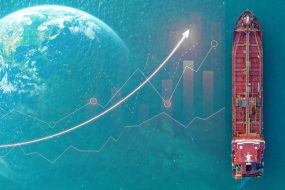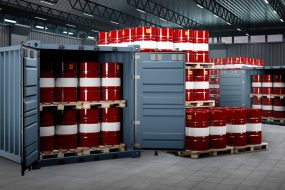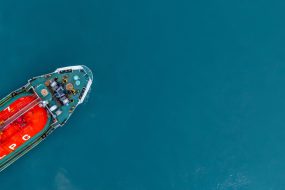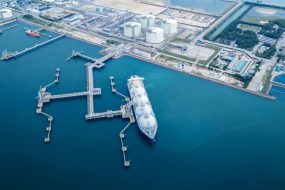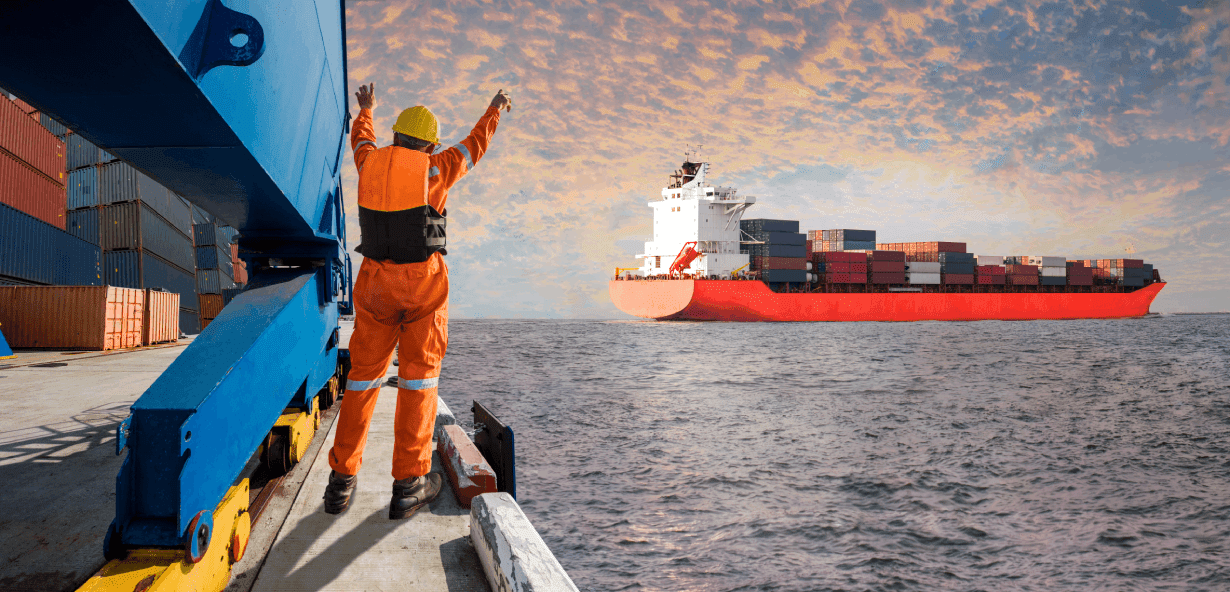

Container shipping transports more than 95% of all manufactured goods worldwide. Here are the busiest shipping routes in 2022.
The shipping industry handles approximately 11 billion tonnes of goods yearly, accounting for the transportation of more than 50,000 vessels globally. From petroleum and oil productsto raw materials and minerals, machinery, automobiles and equipment, to chemicals, food & beverage and other finished goods, the shipping industry transports millions of containers to and from countries.
The volume of goods carried; traffic conditions; natural circumstances such as wind, current, and weather; piracy; and physical constraints affect shipping traffic, leading to some routes being busier than others.
Related article: Supply Chain Logistics Barriers and How to Overcome Them
The shipping industry handles approximately 11 billion tonnes of goods yearly, accounting for the transportation of more than 50,000 vessels globally.
Nonetheless, underpinning the global economy, container shipping is said to move more than 95% of all manufactured goods worldwide. So with that, let’s take a look at the five busiest shipping routes in 2022.
Container shipping moves more than 95% of all manufactured goods worldwide.
1 – The Dover Strait (English Channel)
The Dover Strait is the narrowest part of the English Channel, marking the boundary between the Channel and the North Sea, separating Great Britain from continental Europe.
Most maritime traffic between the Atlantic Ocean, the North Sea, and the Baltic Sea pass through the Strait of Dover rather than taking the longer and more dangerous route around the north of Scotland. The strait is the busiest international seaway in the world, used by over 500 commercial vessels daily.
The Dover Strait is the busiest international seaway in the world, used by over 500 commercial vessels daily.
2 – The Strait of Malacca
The Strait of Malacca is a narrow stretch of water between the Malay Peninsula to the northeast and the Indonesian island of Sumatra to the southwest, connecting the Andaman Sea (Indian Ocean) and the South China Sea (Pacific Ocean), and is the main shipping channel between the Indian and Pacific oceans.
Not only linking Asia to the outside world, but it’s also the main shipping lane within Asia, connecting the region’s biggest economies. Notably, more than 83,000 vessels pass through it every year, representing 40% of the global sea traffic, and is a significant route for the transportation of energy products.
Oil and gas shipping and logistics at Aramex
Over 83,000 vessels pass through the Strait of Malacca, representing 40% of the global sea traffic.
3 – The Suez Canal
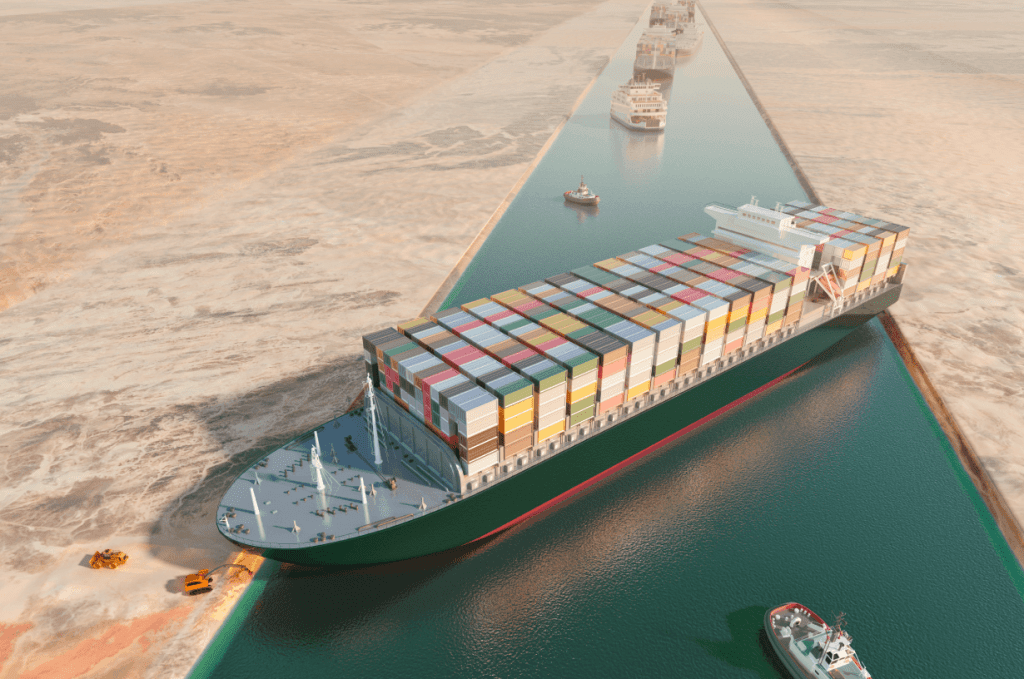

Officially opened in 1869, the Suez Canal is an artificial sea-level waterway in Egypt, connecting the Mediterranean Sea to the Red Sea through the Isthmus of Suez and dividing Africa and Asia. It’s also the preferred trade route between Europe and Asia.
In 2021, the Suez Canal was famously obstructed by the container ship Ever Given for six days. As a result, Usama Rabie, chairman of the Suez Canal Authority of Egypt, stated that the damage caused by the blockage of the canal could reach about $1 billion.
As the shortest sea route between Asia and Europe, it is also one of the most popular trade routes, with approximately 19,000 ships passing daily, representing 12% of global trade and 30% of international container traffic.
Related article: Why Natural Gas Will be the Bridge to a Cleaner Energy Mix
The Suez Canal is the shortest sea route between Asia and Europe, with approximately 19,000 ships passing daily.
4 – The Panama Canal
The Panama Canal is an artificial waterway in Panama connecting the Atlantic Ocean with the Pacific Ocean and dividing North and South America. This route allows vessels to bypass the hazardous Cape Horn route around the southernmost tip of South America or even the less popular route through the Arctic Archipelago and the Bering Strait.
With approximately 14,000 vessels using the route every year, a study by the US Army Corps of Engineers has pointed out that by 2030, nearly two-thirds of the world’s container ships will not be able to use the Panama Canal – because of the vessel size.
However, since its expansion in 2016, the Panama Canal has transported about half a billion tonnes of goods in 2020 – marking it the first time the canal has carted more than 500 million tonnes of goods in a 12-month stretch.
Related article: More Biofuels Will Push for Sustainable Aviation Globally
Approximately 14,000 vessels use the Panama Canal route every year.
5 – The Strait of Hormuz
Providing the only sea passage from the Persian Gulf to the open ocean, the Strait of Hormuz is a strait between the Persian Gulf and the Gulf of Oman. With Iran on the north coast and the UAE and Musandam, an enclave of Oman on the south coast, it’s one of the world’s most strategically essential chokepoints due to what passes through the route – oil. Its daily oil flow averaged 21 million barrels per day, equivalent to about 21% of global petroleum liquids consumption.
Other notable mentions include the Danish Straits, The St. Lawrence Seaway, The Strait of Gibraltar, and The Bosphorous Strait, among others.
Oil and gas shipping and logistics at Aramex
The Strait of Hormuz’s daily oil flow averaged 21 million barrels per day, equivalent to about 21% of global petroleum liquids consumption.
The maritime industry of the future
With more and more vessels transiting every year, the maritime industry is growing at an exponential route. This demand is forcing freight forwarders to better manage charges and control container tariffs on routes.
As the shipping industry grows, technology solutions and tools that provide the most accurate data will allow businesses to transport goods efficiently across complex ocean lanes.
From the first-ever trade route between Mesopotamia and Pakistan around 3000 BC to today’s transpacific routes that account for 31.2 million TEUs of cargo flow, the maritime industry has maintained its leading position and will continue to do so while modernising how it transports goods.

